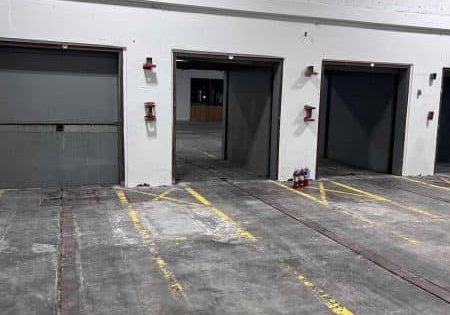An Elevator Community?
Apr 1, 2024

The editorial this month will be a little different. The April issue is one of several this year that will help tell the story of how the National Association of Elevator Contractors (NAEC) came to be 75 years ago. For 70 of those years, ELEVATOR WORLD has been helping write their history and that of many other organizations in the industry. I want to write today about those few years in between when a group of men began to think a contractor association was needed. One of those men was my father, Bill Sturgeon.
When my father returned from World War II (Army Signal Corps — Pacific theater) in 1946, he was literally thrown cold into the elevator industry. He aspired to be a writer, but he had a wife and baby to support, as did thousands of other soldiers. His wife’s father owned a small elevator company, Mobile Elevator, that had struggled through the war — “fixing elevators with baling wire and rebuilt motors.” And his father-in-law was in ill health. However, my mother and father thought they could pull it together to support the family. So, he became an “elevator man.” He was mechanically inclined, and the Army had taught him organization and management. The company’s 80-year-old mechanic became his teacher, along with a battered copy of Fred Annett’s Elevators. Beyond that, education for independent contractors was nonexistent. The country was full of scrappy young men who were not afraid of hard work and eager to start their lives. There was pent-up demand for many things that had not been available in the war years, including elevators. In many ways, it was a golden age. My father thought nothing of driving all night (Southern Alabama backroads) to be the first guy in an architect’s office the next morning.
The elevator industry OEMs (at the time Otis and Westinghouse) were chasing high-rise business, so the small elevator contractors fought for the rest. Those big guys had branches and, in some big cities, they could make all their money in a small area. On the other hand, Mobile Elevator’s territory ran from the Tennessee line to Mobile and several hundred miles across the coast from Mississippi into the Florida panhandle. Many small elevator contractors tied their companies to Montgomery Elevator for traction equipment and Rotary Lift for hydraulics where they obtained machines, controllers and safety gears. They got other important components (cabs, doors, rails, etc.) from a variety of suppliers.
As the post-war boom continued, it became obvious that the needs of small to medium-sized contractors were training and components. Even the union was not involved in training at this time. The writer in my father felt that communication was abysmal. Many who were Montgomery suppliers met yearly and lapped up the information available at their famous “fish frys.” Rotary Lift had regional sales managers, and both supplied the independents with brochures, specifications and pricing data. When it came to bidding against the OEMs, the independents’ advantage was fast reaction time.
Just three years after the war ended, a dozen independents met in Moline, Illinois, to discuss a possible association. A year later, they signed a constitution, and Mobile Elevator became one of the five founding members of the NAEC. Their first major expenditure was to Paul Kern, who wrote a newsletter for the membership full of homespun philosophy about relations between labor, management and customers. It took a few years before it became obvious that they needed to invite the suppliers to join. Overnight the suppliers became a great source of education, and their meetings were packed. A few years later, they asked if they could display their components in the hotel rooms.
My mother was the first woman at an NAEC convention, there to help with registration. After that, everyone wanted the women to be invited. I was probably one of the first children at an NAEC convention, as my parents were both deeply involved with the association management. I have a favorite picture of my parents and me (as a teenager), dressed up to go to the supplier suites. Please notice the white gloves we are wearing (featured photo). The dress code is much different now at the exhibition.
In the early years of the association, my father served as president and then executive director. Finally, in the early 1950s he thought he could “go home” to writing. Mobile Elevator was healthy, and NAEC had hired a paid executive director. They say you should write what you know; by then, my father knew war and elevators. We are all glad he chose elevators, and EW was born in 1953.
We have an amazingly full issue this month. In addition to Dr. Lee Gray’s article on NAEC 1950-1974: Building Community (see p. 64), we focus on Doors and Door Operators with six articles:
- 1600 Roe Street by Michael J. Ryan. The Peelle Co. provides new doors for a former Sears Roebuck, now an industrial space close to downtown Dallas.
- Improving All the Time by Angie C. Baldwin. An interview with CEO Tom Stephenson who talks about Wittur Group’s growth and new products.
- Door Operator Technology and the Progression to Linear Drive Systems by Andrew Godwin. The author takes us on a journey into the history of door operators (including a relative).
- New Options for Door Equipment in North America by T. Bruce MacKinnon. The author interviews L.J. Blaiotta and Eduard Gomis on the joint venture of Columbia and US Door Equipment Corp.
- Unlocking Innovation. ECI America’s series of residential door operators keep evolving.
- Locking in on Elevator Safety by Kevin Brinkman and Philip W. Grone. The two authors are from National Elevator Industry, Inc. They discuss door lock monitoring (DLM) and why many states have not put DLM systems on existing elevators.
We also have a great Continuing Education article (0.1 hour CEU), Elevator System Weights — A Critical Mass by Kevin Heling, who explains the distinction between mass and weight in elevator systems. With already-installed equipment, technicians must be trained in how to properly calculate this.
There is much more to enjoy in the issue, so please let me know what you think at [email protected].
Get more of Elevator World. Sign up for our free e-newsletter.









